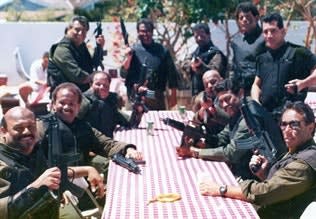Informants connected to these Mexican nationals operating out of Paramount, South Gate, Downey, and Cudahy began whispering names such as Angel Felix Gallardo and Rafael Caro Quintero. We didn't make the connection at the time, but these men founded Mexico's first major Drug Trafficking Organization (DTO)—the Guadalajara Cartel.
This DTO had become such a problem that the U.S. Drug Enforcement Administration had assigned its agents to work with Mexican law enforcement in Mexico. A particularly effective DEA agent and former Marine, Enrique "Kiki" Camarena, was assigned to the Guadalajara office in 1981. In 1984, Camarena provided information to the Mexican Army that lead to the raid on "Rancho Bufalo," a 2,500-acre marijuana plantation. This dealt the Guadalajara cartel an estimated $8 billion blow.
The Mexican drug lord Gallardo demanded retribution on whoever was responsible for this raid and pressed his corrupt law enforcement contacts for the names. Crooked Mexican cops identified Special Agent Camarena and kidnapped him in broad daylight from the front of a police office on Feb. 7, 1985. Kiki was horribly tortured by his kidnappers and kept alive under the supervision of physician Dr. Humberto Alvarez Machain. His mutilated remains were found in Michoacán on March 5.
The U.S. authorities were furious and began pressuring Mexican President Miguel de la Madrid and his federal investigators to identify the murderers and arrest them. Eventually the key suspects were identified—Ernesto Fonseca Caririllo, Javier Vasquez Velasco, Juan Jose Bernabe Ramirez, Ruben Zuno Arce (a relative of former President Luis Echeverria), Juan Ramon Matta Ballesteros, Dr. Machain, Gallardo, and Caro Quintero.
Gallardo was protected from prosecution by his corrupted influential political friends. Without the benefit of legal extradition procedures, Dr. Machain was "snatched" by U.S. agents; brought to the U.S.; and tried in a federal court in Los Angeles. He was acquitted by the judge. The others were arrested and tried in Mexico. Matta Ballesteros was arrested in Honduras, and Caro Quintero in Costa Rica.












